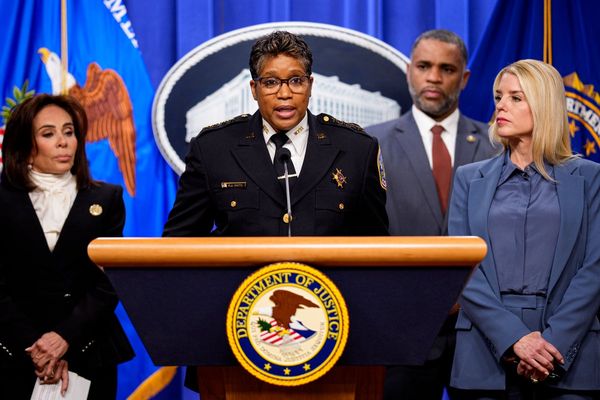
If finding the tiny radioactive capsule that went missing in the vast Australian outback was like finding a needle in a haystack, at least the needle was crying out “here I am!”, Dr Edward Obbard says.
Just 8mm by 6mm – the size of a 10c coin – the capsule fell out of a truck on its way from a Rio Tinto mine site in Western Australia’s Pilbara region to Perth, sparking a six-day hunt across the 1,400km desert route.
Authorities warned the caesium-137 in the capsule could cause radiation burns or sickness and that standing within a metre of it would be equivalent to receiving 10 X-rays in an hour.
Obbard, a senior lecturer in nuclear engineering at UNSW Sydney, says if it had been a different toxic substance – the nerve agent novichok, for example – it would never have been found. But radioactive materials, by their nature, emit radiation that makes them detectable.
“Radiation sources just stream out saying ‘here I am’,” Obbard says. “I wouldn’t say it’s easy, but it’s much easier than looking for a bit of toxic material that wasn’t giving out radiation.”
The search for the missing capsule captured the world’s imagination, but Obbard says radioactive material goes awol about 100 times a year around the world.
A radioactive piece of material that is not currently being regulated – that is, it isn’t under some kind of authority or oversight – is known as an “orphan source”. And while Australia is a highly regulated country, it has had its own orphan sources. In 2019, a density moisture gauge with a radioactive core was stolen from the back of a ute in Ipswich.
Obbard says that, as far as he knows, it’s never been found.
A similar theft was carried out in Campbelltown in 2016. In 2013, there were four separate incidents of radioactive sources getting stuck in a piece of offshore equipment and becoming “deemed irretrievable”.
According to the Australian Radiation Incident Register, there are annual occurrences of radioactive sources being lost, stolen, or found. There was one incident in 2020, six in 2019, another one in 2018, four in 2017 and a whopping 15 in 2016. 10 of those were reports of finding low-level hospital waste.
In one case study, listed under “transport” rather than “lost/stolen/found”, the register says a decayed radioactive source went missing in transit.
“It eventually arrived at the transport company’s Sydney depot – nine days after it had been shipped,” the register reported.
And that’s just in Australia. Globally, the Centre for Nonproliferation Studies’ global incidents and trafficking database shows there have been 1,205 incidents of “nuclear and other radioactive materials outside regulatory control” since 2013.
One of the most famous international incidents happened in 2001, when three people from the village of Lia in Georgia found two hot metal objects while they were collecting firewood in the nearby forest. They used these objects – later found to be abandoned radioisotope sources – as heaters when they spent the cold night in that forest.
Within hours, the individuals complained of nausea, headaches, dizziness and vomiting.
The International Atomic Energy Agency investigates other radiological accidents around the world.
“It’s relatively common,” Obbard says. “It seems terrible, but a source is just a piece of industrial equipment and pieces of industrial equipment get broken and go missing all the time … the nuclear industry is actually quite unique in how closely it is monitored and tracked.”
He says the way people have engaged with the story of the tiny lost capsule has been “positive”, with “an undercurrent of irony and mockery”, but not a lot of hysteria. And he speculates that there is also something inherently amusing about the scales at work.
The Australian Radiation Protection and Nuclear Safety Agency and the Australian Nuclear Science and Technology Organisation sent specialists and special equipment to find the capsule. One of the vehicles carrying specialist equipment detected the radiation while travelling at 70kmph, and portable detectors were then used to close in on it.
A 20-metre exclusion zone was established around the site where it was found, and authorities surveyed the area for contamination while the capsule was put in a lead container and transported to Perth.
The prime minister, Anthony Albanese, has been critical of the fine which could be levied, according to state legislation from 1975 – it’s a maximum of $1,000 in Western Australia for failing to safely store or transport radioactive material. Albanese called that figure “ridiculously low”, and the WA government says it will take a look at it.
Rio Tinto says it will fully cooperate with the investigation and has offered to reimburse the cost of the search.
On Thursday, Albanese said it was “quite extraordinary” that they found the capsule.
“Thank goodness … because it was such a strange story, wasn’t it?” he said during an interview with a Perth radio station.
“Little radioactive, tiny little thing that they were looking for, like a needle in a haystack.
“[They] probably shouldn’t have lost it in the first place.”







